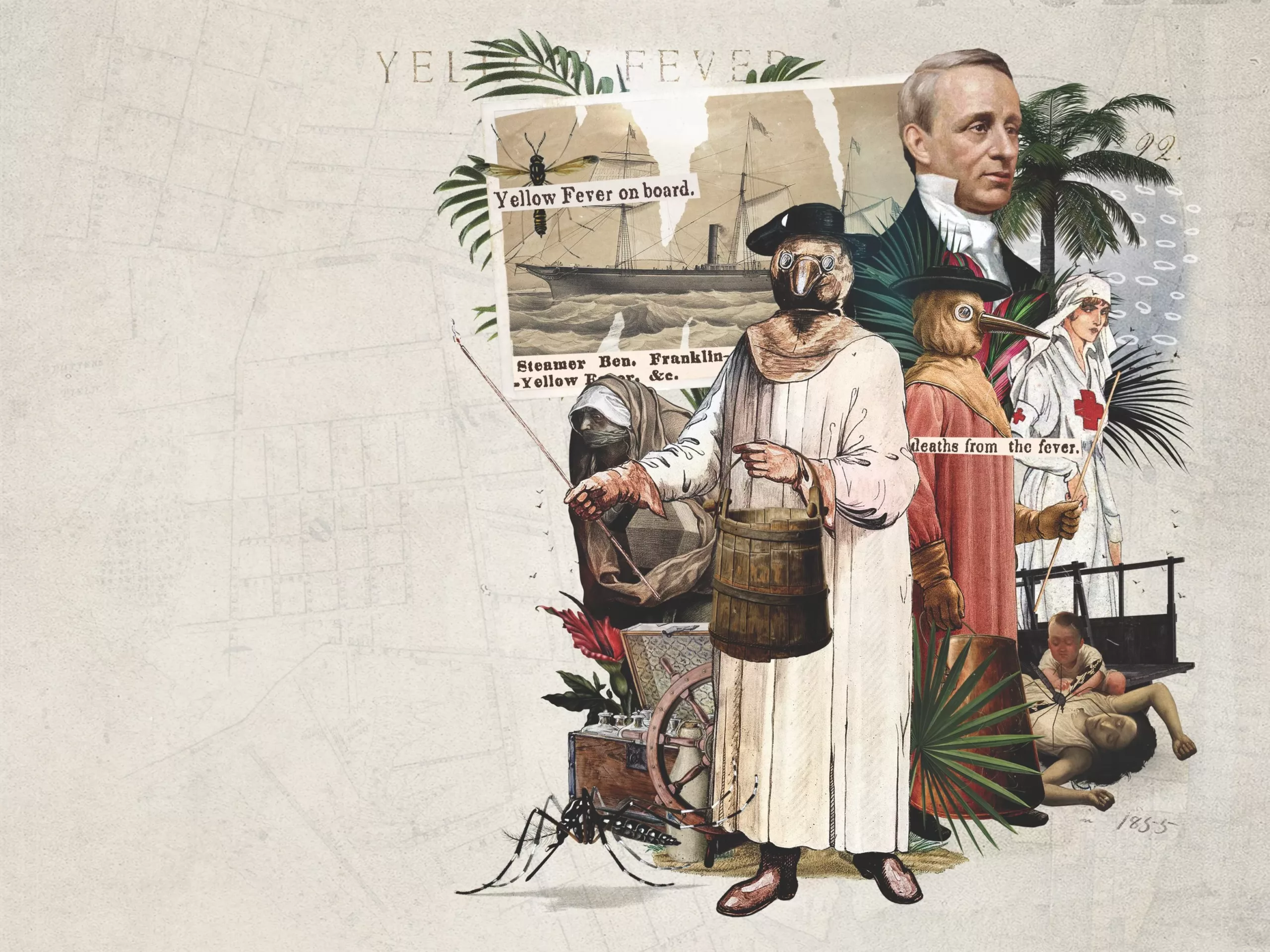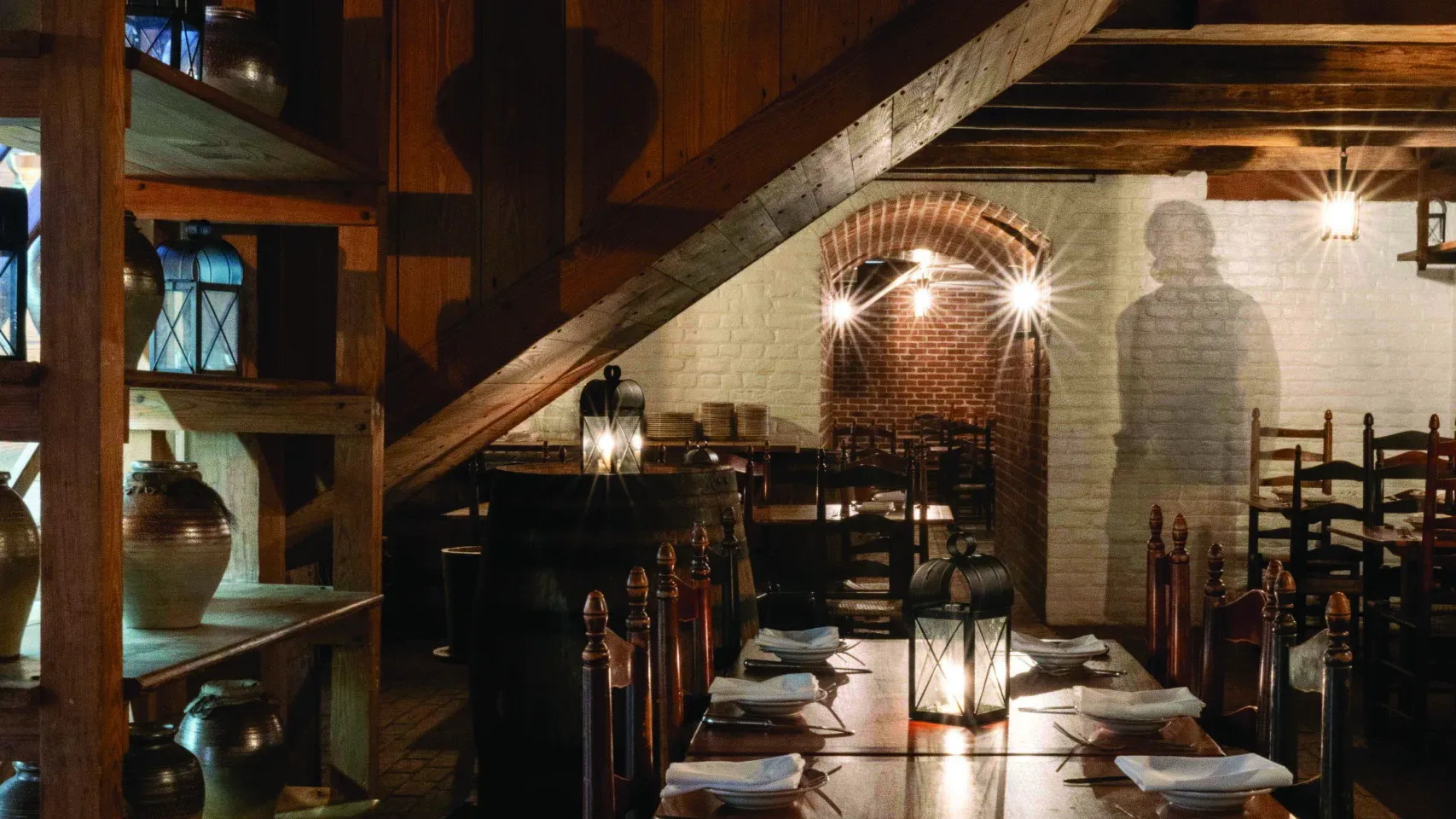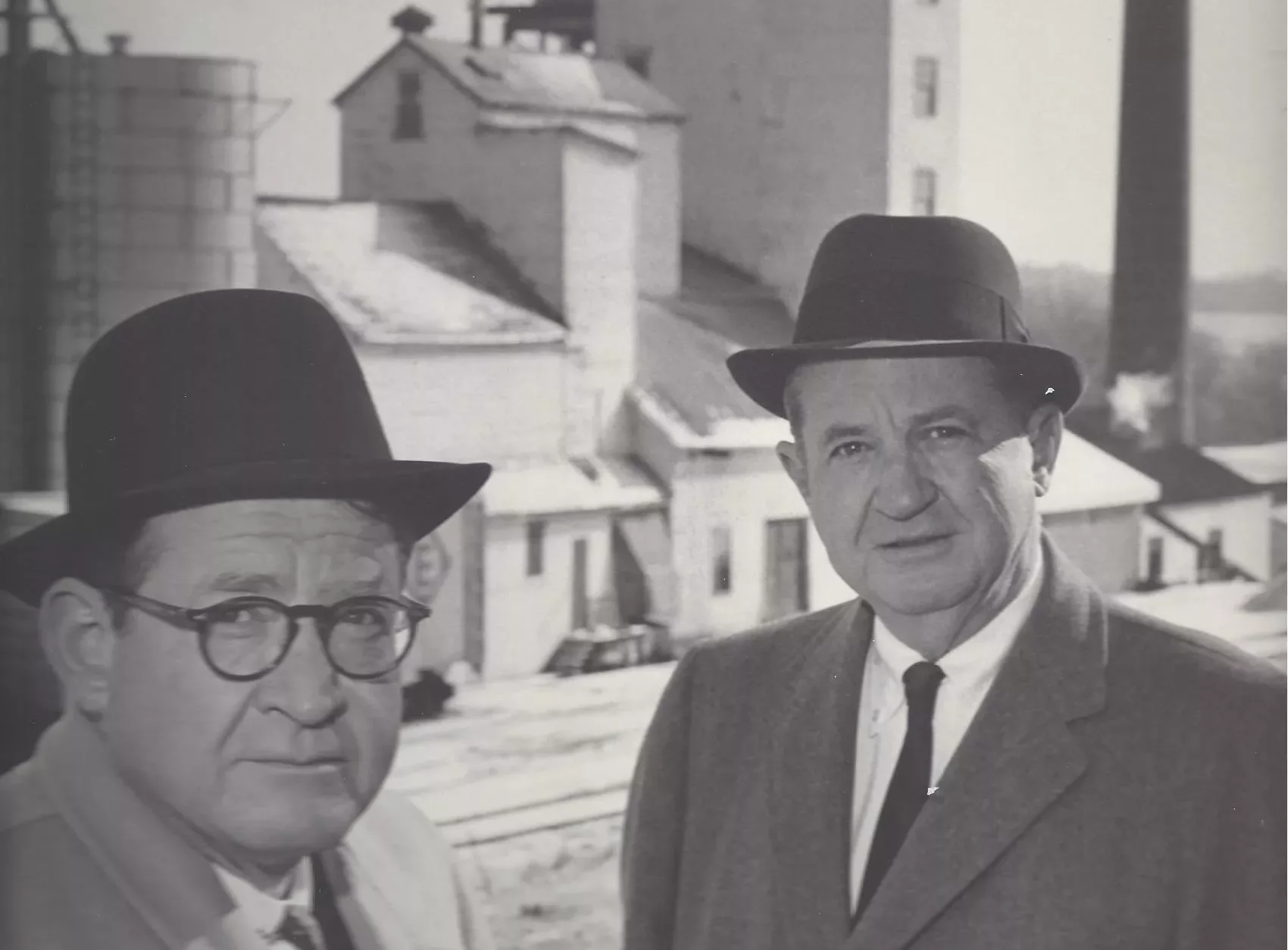It was an eerie summer morning in 1855. Before the sun had risen, it seemed like every man, woman, and child in Portsmouth was on the move.
Horses loaded with bags, porters laden with trunks, wheelbarrows, carts, suitcases, boxes, and entire families scurried together in amoeba-like blobs. Parents almost ran as they dragged their small children by their hands toward the wharf.
Cart wheels rattled over cobblestones, dogs barked, neighbors hollered as they bustled, creating a swirling cacophony of fright. A whole town, fleeing from something, unsure of what, their faces filled with fear.
That was 170 years ago, and it all started when a steamship named the Benjamin Franklin sailed out of St. Thomas in the Virgin Islands—with a load of fruit and a few dozen pleasure passengers.
During late winter and spring of 1855, the most feared tropical disease of the day—yellow fever—had hopped from ship to ship in the St. Thomas harbor, sickening and killing several crew members. In fact, days before heading north, a crew member of the Franklin had come down with the fever and barely survived.
The ship was bound for New York, but as it steamed north along the East Coast, it sprang a leak around its mast. Crew and passengers alike furiously manned pumps in the ship’s hold to keep the Franklin afloat.
Halfway up the coast, the captain gave up on making it to his original destination of New York and detoured into Norfolk and Portsmouth for repairs.
What happened over the next 100 days—from late June through October 1855—may be the largest non-wartime catastrophe ever in the country. Mosquitoes breeding in rain barrels on the ship, along with crew members who had the dreaded yellow fever virus coursing through their veins, ignited the most fatal plague in U.S. history.
The yellow fever epidemic in Norfolk and Portsmouth was devastating, with a fatality rate far greater than the Spanish flu pandemic of 1918. During the summer of 1855, yellow fever sickened nearly everyone in both cities. One out of three people died.
The nation sat dumbstruck as it followed the daily news of the devastation in Virginia. New York, Baltimore, Philadelphia, Boston, and New Orleans papers posted heartbreaking reports.
In the end, two-thirds of the 26,000 residents of both cities would flee on boats, by rail, by carriage, or on foot to avoid whatever was sickening people. Of the 9,000 or so who stayed behind, at least 3,200 died.
At the end of September, Norfolk’s acting mayor, N.C. Whitehead, wrote to thank doctors and nurses from other cities who had streamed into the Virginia cities to help. Despite their efforts, nearly two dozen of these brave volunteer medical professionals succumbed to the plague trying to save residents.
Whitehead’s letter put into perspective what they had witnessed: “The annals of our civilization furnish no authentic record of a visitation of disease as awfully severe as what we have just encountered.”

This article originally appeared in the April 2025 issue.










